Lion’s mane -- ahh, one of nature's most versatile mushrooms.
Lion's mane not only have powerful potential health benefits for the body and mind, it's one of those rare functional mushrooms that's both healthy AND delicious.
Lion's mane is packed with 35 beta-glucans - a medicinal compound that's been linked to anti-tumor, anti-aging, and anti-cancer properties (among others).
But that's not all. Lion's mane has a meaty texture and a mild flavor, which makes it the ideal substitute for chicken, lobster, crab, and other mild light meats.
If you're thinking of cooking with lion's mane, but aren't sure how to prepare it, you've come to the right place!
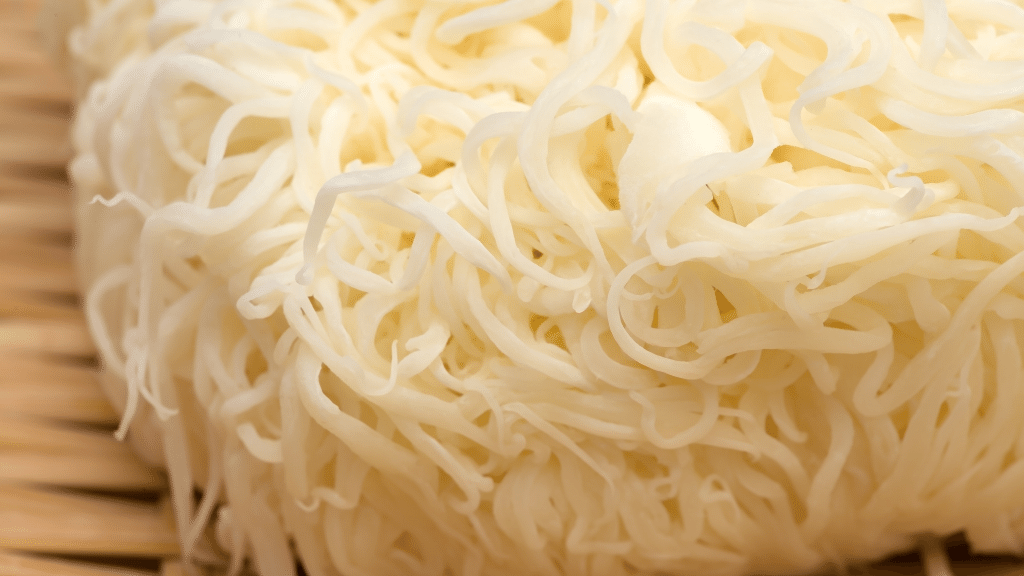
In this article, we'll cover how to cut, clean, and prepare your lion's mane mushroom for dinner tonight. Plus, we've put together drying and storage tips for long-term use.
Let’s take a look!
Tips for preparing lion’s mane mushrooms for cooking
As any chef knows, preparing your ingredients is key for a smooth cooking process. Knowing exactly what ingredients you’ll need and how to clean them will shorten both your cooking and cleanup time.
Prepping your veggies and proteins can be tiresome, but it’s important that all ingredients are primed.
Lion’s mane mushrooms are fairly easy to prepare, so you’ll get to cooking in no time. Here are some tips:
1. Get your mushrooms from a trusted source
Your local farmer’s market or mushroom farm is a great place to start. But many specialty food shops and supermarkets also carry them. Make sure they’re fresh, not slimy, and are still a bright ivory color without distinct or pungent odors.
If you're looking for a longer-term source for mushrooms, consider growing them at home! Boxed kits are great for 1-3 flushes of mushrooms. Or, consider a more sustainable setup with block or bag kits.
2. Clean your mushrooms
If you've sourced your lion's mane from the market or in the wild, it's normal for there to be some dirt or debris trapped in the hairy-texture of the mushroom. Cleaning lion's mane mushrooms is easy. Avoid soaking lion’s mane in water since they’re highly absorbent.
Instead, use a damp paper towel or a slightly-damp veggie brush (like a spare toothbrush!) to gently remove dirt and debris from your mushroom fibers.
3. Let your mushrooms dry
If you accidentally wash your mushrooms, or if you had no choice because of the volume of dirt and debris, no problem. You can very gently squeeze them with dry paper towels and then lay them and lay them out to dry.
If they're still very wet, consider slicing them and laying them flat for faster drying time. Set on a clean dish towel for at least a couple of hours before cooking.
Mushrooms like lion's mane can absorb excess moisture like a sponge. Drying them will help to prevent themfrom adding unnecessary moisture to your dish.
4. Consider dehydrating your mushrooms
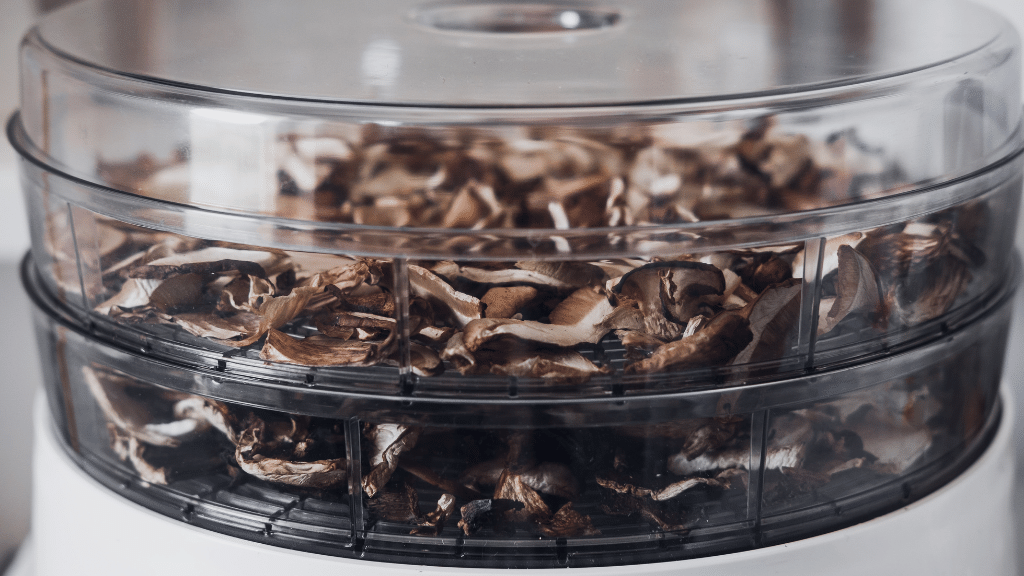
If you plan to use your lion’s mane in soups or stews, consider dehydrating them. This allows you to store them for longer and prevents unnecessary moisture from entering your dish which can alter the flavor.
Drying your mushrooms is also the ideal method for long-term storage. Mushrooms will only stay fresh for about 5-10 days, depending on the storage conditions. Proper drying and storage allows you to use them for months and months!
Here's a complete guide to drying mushrooms.
5. Go ahead and eat the stem
Lion’s mane don’t have a very long stem, but feel free to use it along with the rest of the mushroom! If you're cutting it yourself from your block kit, slide a sharp knife under the fruiting body, as close to the fruiting body as possible.
6. It will shrink a bit with cooking
Like most mushrooms, you should expect the mushroom to shrink a bit with dehydration or cooking.
Lion’s mane has a bit of a distinct taste, and the thick texture makes them great for frying, roasting, sautéing, and more. They’re also great in chowders and soups and should be cooked entirely.
Why are lion’s mane mushrooms so popular in dishes?
Lion’s mane mushrooms have been used in traditional Chinese medicine for thousands of years medicinally but also for gourmet consumption.
In powder form, it can be mixed with water to brew a tea, or you can add it to your morning coffee.
The mushrooms have a unique flavor so they don’t need much to pop in any dish. Cooking doesn’t have a significant impact on the nutrients, so you don’t have to worry about losing out on the amazing benefits that these mushrooms provide. Similar to other fungi, you do have to consume them regularly in order to feel the impact on your health.
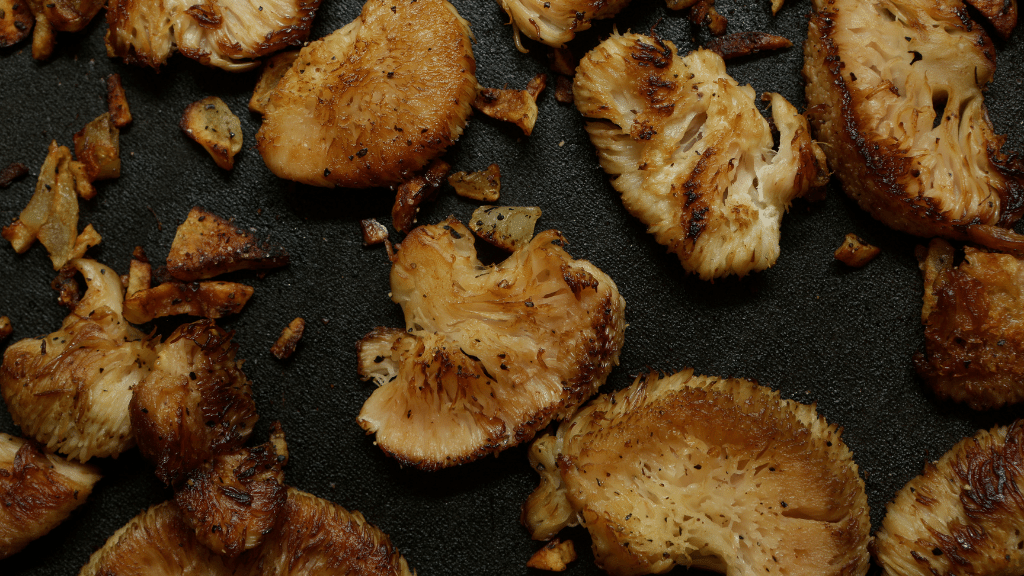
Always make sure to cook your lion’s mane thoroughly. They contain chitin in their cell walls which can cause gastric upset and even an allergic reaction if it’s consumed in high concentrations. It’s a powerful nootropic due to its potential to improve cognition and memory.
Although it isn’t a magic mushroom or a stimulant, it provides a laundry list of nutrients and benefits.
Where can I buy lion's mane mushrooms?
Try your local specialty supermarket and head to the produce aisle. If you can't find them there, you might try your local farmer's market. If all else fails, you can easily grow your own lion's mane mushrooms at home with an easy-to-use grow kit.
Or, use our interactive nation-wide map to find a local mushroom farmer near you!
What are the nutritional benefits of lion's mane mushrooms?
You can expect a single cup of lion's mane mushrooms (around 70 grams) to contain:
- Calories: 15.4
- Protein: 2.16 g (4 percent recommended daily value, or DV)
- Fat: .24 g (0 percent DV)
- Carbohydrates: 2.28 g (0.8 percent DV)
- Fiber: 0.7 g (2.5 percent DV)
- Calcium: 2.1 mg (0 percent DV)
- Iron: 0.35 mg (2 percent DV)
- Potassium: 223 mg (4.7 percent DV)
- Magnesium: 6.3 mg (1.5 percent DV)
- Phosphorus: 60.2 mg (4.8 percent DV)
Lion's mane, like all mushrooms, can be an excellent source of vitamin D when exposed to UV lighting, and are proportionately high in fiber.
What are the possible health benefits of lion's mane mushrooms?
Lion’s mane mushrooms have a multitude of possible benefits including:
- Stimulate brain cell growth
- Improving cognitive function
- Alleviate anxiety
- Menopause mood support
- Reduce the risk of heart disease
The long list of benefits of consuming lion’s mane mushroom is in stark contrast to its current reported side effects. In general, lion's mane is considered a very safe functional mushroom to consume regularly.
In animal studies, there appeared to be no negative use after exposure for nearly a year. In human testing, there was one recorded case of an elderly man who experienced exacerbated symptoms of his asthma so caution should still be applied.
What does lion's mane mushroom taste like?
Even those who claim they are mushroom-haters will find lion's mane particularly appetizing. Lion's mane have a bit less of the reported 'bouncy' and 'slimy' textural issues that one may experience with gourmet counterparts like shiitake.
They have a texture similar to tender meat or shellfish, so they’re used often in vegetarian and vegan recipes as a meat substitute.
Just check out these delicious crab cakes using lion's mane instead of crab meat:
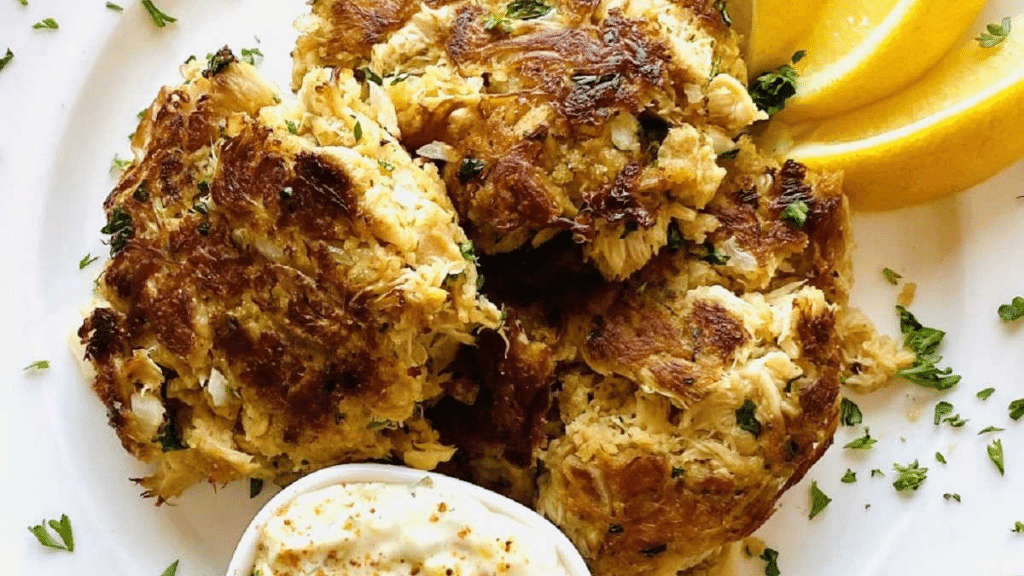
They absorb flavor well, so even simple ingredients will give you a dish bursting with flavor. Lion's mane can be a great side dish when sautéed with just butter and a dash of salt.
We've compiled some of the all-time best lion's mane recipes to try this week here.
Can you freeze lion’s mane mushrooms?
Absolutely! Freezing is a great option if you have fresh mushrooms from the market or grow kit and want to store them. We recommend gently cleaning them as outlined above before freezing. Drying is also a recommended method for long-term storage of lion's mane mushrooms.
As thawing before cooking isn’t always necessary, you may want to slice the mushrooms as well if you plan to add them directly to your hot skillet.
However, if you plan to take them from the freezer directly to the dehydrator, you may want to let them air thaw on several paper towel sheets until they come to room temperature before dehydrating.
How to flash freeze lion's mane for storage
Flash freezing is a great additional step to properly freeze your lion’s mane. To do this, you’ll need to lay out a sheet of parchment paper onto a baking sheet and place the lion’s mane on top, making sure they’re not touching.
Place everything in the freezer for an hour.
Once the mushrooms are frozen, transfer them into a freezer bag. Don’t forget to date the bag–lion’s mane can be frozen for up to 12 months.
Allowing them to freeze separately on the tray prevents them from clumping together in the bag, and enables you to take small handfuls from the freezer at a time.
Should you thaw lion’s mane mushrooms before cooking?
It isn’t always necessary to thaw lion’s mane if you've frozen them, especially if you’re about to cook them.
Fresh is always best, but sometimes we have more ingredients that are needed for the current dish.
You might want to let them air thaw on several sheets of paper towels if you’re going to put them in a dehydrator. Just make sure that they’re thawed to room temperature before dehydrating. The texture will probably be a little different and they will be softer, so it’s not a good idea to continuously freeze and refreeze the same batch of lion’s mane.
You don’t want to risk mushrooms that didn’t freeze properly and have soured.
If your mushrooms are going straight into a sauté pan or soup/stew, there's no need to thaw them before cooking. Always be cognizant that mushrooms are like sponges and may add more moisture to your dish, even when frozen.
Lion’s mane is a versatile mushroom with a multitude of health benefits. Not only does it boost your health, but it’s easy to prepare and is bursting with texture, adding depth to your recipes.
How to cook with dried lion's mane mushrooms
If you purchased bulk dried lion's mane mushrooms, or you opted to dry yours for storage, you may be wondering what to do with them when you're ready to get cooking.
Dried lion's mane mushrooms are best when they're used in soups, stews, and broths.
If you're looking to use them as a featured side dish, or as a prominent element in a sauté dish, we recommend you use fresh mushrooms for maximum consistency, texture, and flavor.
While drying lion's mane does preserve much of the flavor, re-hydrating for cooking can take some of that great flavor away.
If you purchased your lion's mane dried in bulk, some people recommend giving them a quick rinse after rehydrating, as they can sometimes have a bit of residual mushroom 'grit' on them.
Let's talk more about what you can do with dried lion's mane:
1. Rehydrate your lion's mane mushrooms:
Using room temperature water, rehydrate your mushrooms by simply placing them in a small container with some water. Some sources recommend using hot water to rehydrate. But one ambitious chef did a mini-experiment with porcini mushrooms. They found that the mushrooms re-hydrated at nearly the same rate in room temperature water as hot water.
And room-temp water saved more of the flavor.
Once they're rehydrated, they're ready for you cook with.
Some sources recommend dry-cooking just a bit of that moisture out. You can do this by tossing your rehydrated mushrooms in a hot frying pan with no oil. Remember, mushrooms are like sponges and sometimes can retain TOO much moisture in the rehydrating process.
Once they seem like the right level of hydrated to you, toss them in your dish!
2. Add them dried to stews, soups, broths, and other liquid-forward dishes
Many people use lion's mane as a seafood substitute. Did someone say chowder? Depending on how long your dish is cooking, rehydrate them by tossing them directly into your moisture-focused dish. Just be aware that the mushrooms will absorb some of the moisture from your dish. So keep an eye on that moisture levels.
Why not try tossing some dried lion's mane in with dried shiitake for a delicious and umami-focused mushroom broth! YUM!
Are you hungry yet?
Let us know what you're cooking by contacting us!



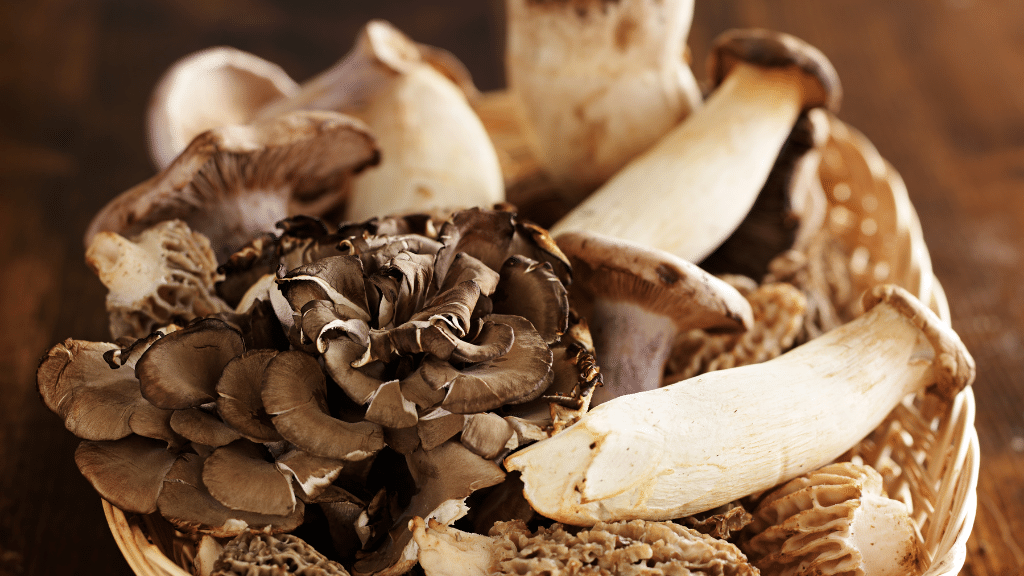



.png)
